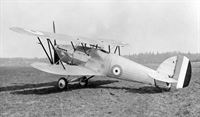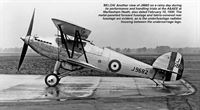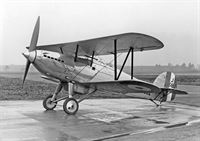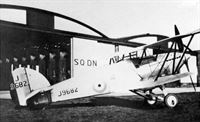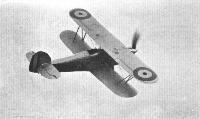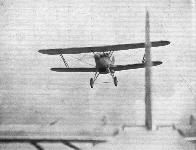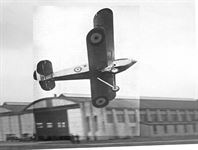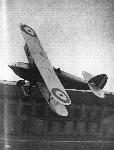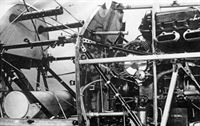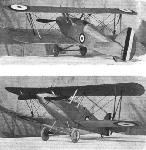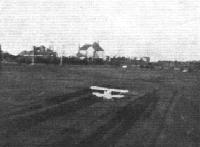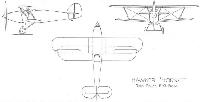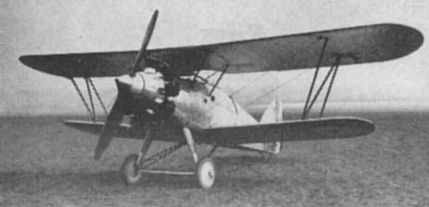
Варианты
- Hawker - Hornet / F.20/27 - 1928 - Великобритания
- Hawker - Fury - 1931 - Великобритания
- Hawker - Nimrod - 1931 - Великобритания
- Hawker - PV.3 - 1934 - Великобритания
- Isaacs - Fury - 1963 - Великобритания
Hawker Fury I и II
История создания истребителя-биплана Fury началась в 1927 году, когда Министерство авиации выпустило техническое задание F.20/27 на истребитель-перехватчик. Хотя представленный компанией "Hawker" прототип был оснащен звездообразным двигателем Bristol Jupiter мощностью 450 л. с. (336 кВт), как того требовало задание, фирме не удалось получить контракт на серийное производство. Тем не менее полученный при его создании опыт пригодился компании, когда дневной бомбардировщик Hart продемонстрировал, что истребительные силы Британии вооружены устаревшими самолетами. Понимание этого факта привело к ускоренной разработке (в инициативном порядке) прототипа нового истребителя, которому "Hawker" присвоила название Hornet. На этой машине Сидней Кэмм решил отказаться от использования звездообразного двигателя, в котором было так заинтересовано Министерство авиации, и установить рядный V-образный Rolls-Royce F.XIS (позднее названный Kestrel). Этот самолет и стал прототипом Fury, купленным Министерством авиации, которое присвоило ему новое обозначение в соответствии принятой тогда в ВВС номенклатурой.
<...>
Описание:
- Hawker Fury I и II
- Flight, June 1929
BRITISH AIRCRAFT AT OLYMPIA
Фотографии
-
Air Pictorial 1957-11 / R.Cross - Fury Fighters
Interceptor Fighter F.20/27 was re-engined with a 450-h.p. Mercury radial after brief trials at Martlesham Heath. Top speed was 218 m.p.h. at 10,500 ft. at loaded weight of 3,178 lb. Span was 30 ft., length 23 ft. 8 1/4 in.
-
Flight 1930-02 / Flight
This view of the actual full-size "Hornet" serves as a comparison with the illustration above of the model in the same position
-
Aeroplane Monthly 1991-12 / A.Lumsden - On silver wings (15)
The unmarked Hawker Hornet photographed at Brooklands in January 1929. It was the true Fury prototype and later took up the serial number J9682.
-
Aviation Historian 19 / P.Jarrett - The Hornet dilemma
The Hawker Hornet at Brooklands in 1929, shortly after completion, with RAF insignia but lacking a military identity. Its careful streamlining, greatly helped by the choice of a water-cooled inline engine, made it an exceptionally elegant design for the time, later further enhanced by the addition of wheel fairings, or "spats".
Hornet had similar airframe but with water-cooled Rolls-Royce engine. Used throughout 1930 as Fury prototype with F.XIIS, which in production form became the famed Kestrel. Top speed 214 m.p.h. at 10,000 ft.; loaded weight 3,490 lb.; length increased to 26 ft. 8 1/2 in. -
Aeroplane Monthly 1991-12 / A.Lumsden - On silver wings (15)
Регистрационный номер: J9682 [4] Early in 1930 J9682 flew trials with 1 Sqn; but on April 11, 1930, it collided with Siskin J9359 at 3,000ft, shed its top wing and crashed near Chichester, Sussex.
-
Aviation Historian 19 / P.Jarrett - The Hornet dilemma
Регистрационный номер: J9682 [4] Another view of J9682 on a rainy day during its performance and handling trials at the A&AEE at Martlesham Heath, also dated February 10, 1930. The metal-panelled forward fuselage and fabric-covered rear fuselage are evident, as is the underfuselage radiator housing between the undercarriage legs.
-
Aviation Historian 19 / P.Jarrett - The Hornet dilemma
Регистрационный номер: J9682 [4] The sole Hawker Hornet at Martlesham Heath during its official trials, bearing its military serial, J9682. The original print bears the date February 10, 1930, on the back.
-
Aviation Historian 19 / P.Jarrett - The Hornet dilemma
Регистрационный номер: J9682 [4] A poor-quality but rare snapshot of the Hornet at Tangmere in 1930 during the Service trials and shortly before the aerial collision with a Siskin during a mock combat that put an end to its career. Fortunately its pilot, Fg Off H.S. Brake, was able to bale out, escaping with a cut face and a broken arm, having been struck by parts of the airframe during his descent.
-
Flight 1929-07 / Flight
HAWKER "HORNET" (Rolls-Royce "F").
-
Flight 1930-11 / Flight
Hawker Fury single-seater fighter.
-
Flight 1931-02 / Flight
The Hawker "FURY" Interceptor Fighter with Rolls-Royce "F" Engine has been selected for R.A.F. equipment after extensive competitive trials - further proof of the all-round superiority of Hawker aircraft.
-
Aviation Historian 19 / P.Jarrett - The Hornet dilemma
The Hornet makes a low pass while being demonstrated at Brooklands in July 1929, probably with Hawker test pilot P.W.S. “George” Bulman at the controls. Designer Sydney Camm apparently got it right first time with the Hornet, which was built as a private venture, as few alterations were made in the production version, the Fury.
-
Flight 1929-08 / Flight Advertisements
The Hawker Hornet with Rolls Royce F. engine. The fastest single seater fighter in the world.
-
Flight 1929-07 / Flight
The Hawker Stand has the distinction of exhibiting three machines never hitherto seen in public: The "Tomtit" training machine, the "Hart" day bomber recently ordered in quantities for the R.A.F., and the "Hornet," believed to be the world's fastest single-seater fighter.
Другие самолёты на фотографии: Hawker Hart - Великобритания - 1928Hawker Tomtit - Великобритания - 1928
-
Aviation Historian 19 / P.Jarrett - The Hornet dilemma
A close-up of the Hornet’s forward fuselage, showing the rear of the Rolls-Royce engine to the right and the bay immediately ahead of the cockpit, with the barrels of the twin Vickers Mk III machine-guns pointing towards the front of the machine. Provision was made for 600 rounds per gun. The production Fury would retain the same armament.
-
Flight 1930-02 / Flight
Two views of Mr. Edwardes' flying scale model of the Hawker "Hornet."
-
Flight 1930-02 / Flight
The model Hawker "Hornet" just starting a successful R.O.G. flight.
- Фотографии



